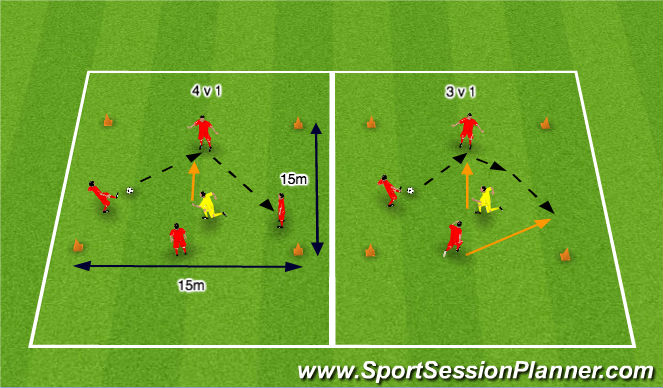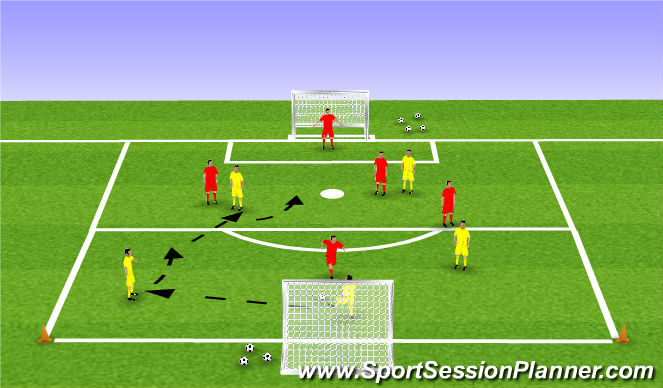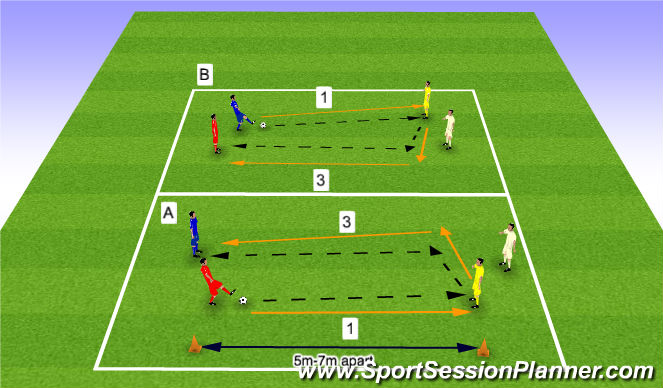Football/Soccer Session (Beginner): First Touch: Model Session 1
Profile Summary

| Name: | Steve Tanic |
|---|---|
| City: | Hamlyn Heights |
| Country: | Australia |
| Membership: | Adult Member |
| Sport: | Football/Soccer |

See the guidance at the top of this page to understand why you are not seeing interactive Football/Soccer images.

Skill Training: First Touch (15 mins)
2. Skill training component:
Positioning Games with two touches as a mandatory requirement (i.e. first touch = control the ball, second touch = pass the ball).
Disallowing a direct pass forces the players to have a good first touch in order to move the ball away from the defender(s) and keep possession!
Which positioning game to use depends on the level of the players and ranges from 4 v 1 (easiest), 3 v 1, 5 v 2 and 4 v 2 (most difficult).
The grid size also depends on the level and capabilities of the players with 15m x 15m as a starting point (15m x 20m for the 5 v 2).
The coach can make the exercise more challenging for the players by simply decreasing the space or easier by making the grids bigger.

See the guidance at the top of this page to understand why you are not seeing interactive Football/Soccer images.

Skill Game: First Touch (20 mins)
3. Skill Game:
5 v 5 with the restriction that with every ball contact each player must take two touches.
Disallowing direct play forces the players to have a good first touch in order to move the ball away from the defender(s) and keep possession!
The coach can make the game more challenging by simply decreasing the space or more easy by making the field bigger or creating a numerical advantage for the team in possession of the ball by adding a ‘joker’.








 Play animation
Play animation Play step-by-step
Play step-by-step Repeat (toggle)
Repeat (toggle) Full Screen
Full Screen Pause
Pause Stop
Stop
Skill Intro 1: First Touch (10 mins)
1. Skill introduction
Players in fours (fives is also fine, and is a way of reducing intensity, if required) with one ball between them. 2 pairs facing each other 5m-7m apart.
The red player starts by passing the ball to the yellow player and following their pass at speed. The yellow player uses their first touch to move the ball away from the red player, and with the second touch passes to the blue player. The red player follows their pass and jogs to the back of the opposite line.
In example A, the yellow player has moved the ball to the right because the red player approached him/her slightly to his/her left side.
In example B, the yellow player has moved the ball to the left because the blue player approached him/her to his/her right.
The coach can also direct the passer to follow the pass by running directly at the receiver. Therefore the receiver has the option of going left or right, ideally the receiver will fake to move the ball in one direction, and then with his/her first touch move the ball the other way.